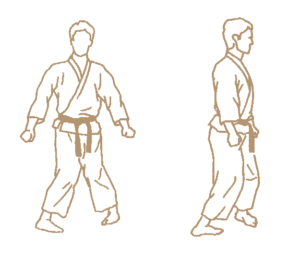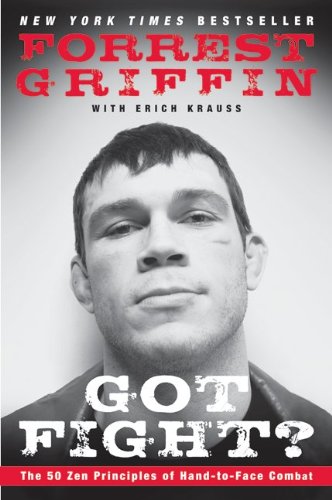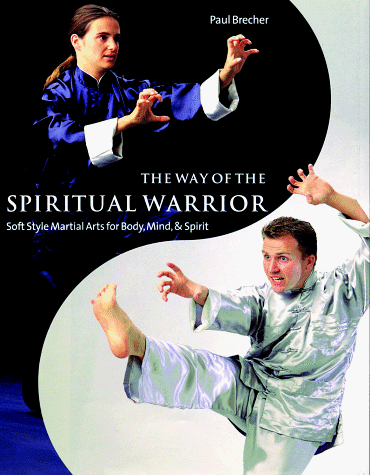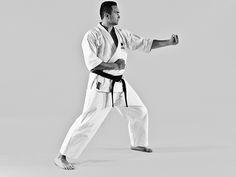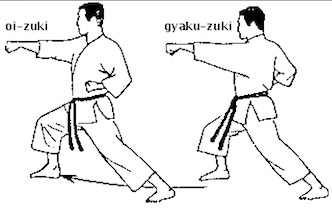- Joined
- Jul 3, 2023
- Messages
- 5,441
- Reaction score
- 27,357
- Awards
- 16
The Problem with Purity - Part 3: Capoeira
The seductive quality of ‚pure‘ martial arts energy is not seen as problematical in capoeira, on the contrary: flawless techniques only serve to heighten the appeal of a game. Since there are no blocks in capoeira, you can be sure that the wide arcs of all your beautiful spinning crescent kicks (armadas) won’t ever be rudely disrupted by another guy’s meddlesome hands. Utility of application is not a consideration - aesthetics is, giving capoeiristas the freedom to create and experiment irrespective of the practicality of their moves and tricks.
The trouble with such crescent kicks is that compared to the trunk, the head is a small and very mobile target, and leaning sideways a bit while raising your shoulder to let them glance off or taking a small step back is often enough to thwart them, without having to risk your blocking getting injured. Crescent kicks like the armada can only ever hit you if you hold perfectly still which no capoerista will ever do, not even a beginner. Just imagine a wrestler or a football player cannoning into you as soon as your leg reaches its highest elevation and bringing you down with a tackle… ugh. Being far more pragmatic, karate doesn’t even teach such risky kicks.
For the avoidance of doubt, what I mean by ‚seductive quality of pure martial arts energy‘ is that styles which only ever practice basic techniques, kata/forms, and pre-arranged partner exercises tend to lull their practitioners into believing that they’re these incredible warriors without ever confronting them with non-cooperating opponents. In some ways, capoeiristas with all their fancy kicks are superior martial artists because they know how to improvise freely and spot sudden opportunities they will be able to exploit. Doing nothing but formal drills, however, tends to ossify your patterns of offense and defense, and the harder you train, the more fossilized and set in your ways you will become.
As in the case of capoeira angola, I’m forced to make a culling here and exclude slow games from my investigation. I hate doing that because I’ve always enjoyed them more than the fast ones but like capoeira angola, they lack this intensity I’ve made one of the criteria for true MA energy. It isn’t just a question of speed - the (musical bows) of the bateria will switch from a very laid-back São Bento Pequeno or Benguela to the syncopated, driving São Bento Grande rhythm played at least twice as fast, and the adrenaline levels of both players in the circle will soar despite of themselves. There’s still cooperation, of course, but also urgency, and if you dodge or evade kicks too slowly, you may get hit since pulling techniques at such a pace is difficult or next to impossible in the case of jump kicks. You can opt out of such fast games if you’re still a beginner or too exhausted from a class but if you decide to play, don’t complain if the going gets too rough for you. As goes:
Quem não quer melar o dedo, não come do vatapá
Quem não tem o couro grosso nessa roda vai sobrar
O lê lêo, o jogo arrepiou
If you don't want to get your fingers sticky, don't eat
Who does not have a thick skin will be left out of this
O lê lêo, the game got scary
Or in other words: If you can’t stand the heat, get out of the kitchen. It is in those fast games where the intent, focus & intensity of capoeira energies are most clearly felt. Nobody will actually try to hit you with malice aforethought but what it will boil down to is a string of very near misses - deliberate misses but sometimes a little bit too close for comfort, and if you manage to escape your partner’s kicks, you may get taken down, and break-falling isn’t taught in capoeira as far as I know. What additionally makes fast games so dangerous is your own cardio, or lack thereof - if you can last for more than 90 seconds of uninterrupted kicking, dodging, and acrobatics, you’re quite good but usually you’ll fade before that, and those kicks will become harder and harder to spot, your reflexes slower, and the overall risks of getting banged around the ears will increase.
Laypeople may discount capoeira games as ‚show fighting‘ or ‚movie fighting‘ but that’s precisely what they aren’t - as opposed to action movie scenes, there’s no fight choreography and protective padding ensuring that nobody will ever get seriously hit, and it’s the capoeiristas themselves who are responsible for keeping the MA energy flowing, not some film director and editors making clever cuts. Prior to the game in the circle, kicks, dodges, sweeps, acrobatics, etc. will be practiced and standard situations rehearsed during a capoeira class, either alone or with a partner, but come roda time, you’ll have to react spontaneously but never predictably, or the other player may guess your next move (unless your maneuver was intentionally predictable, in which case… you get the drift). It’s this spontaneity formal MA styles lack, the ability to think fast on your feet, no matter what the situation may be; ‚think‘ perhaps isn’t the right word, you develop reflexes, instincts, a feeling for which technique will be an adequate response to a given challenge. Practicing set-pieces is all well and good but there comes a time in your martial arts career when you have to let go of them and soar…
The seductive quality of ‚pure‘ martial arts energy is not seen as problematical in capoeira, on the contrary: flawless techniques only serve to heighten the appeal of a game. Since there are no blocks in capoeira, you can be sure that the wide arcs of all your beautiful spinning crescent kicks (armadas) won’t ever be rudely disrupted by another guy’s meddlesome hands. Utility of application is not a consideration - aesthetics is, giving capoeiristas the freedom to create and experiment irrespective of the practicality of their moves and tricks.
The trouble with such crescent kicks is that compared to the trunk, the head is a small and very mobile target, and leaning sideways a bit while raising your shoulder to let them glance off or taking a small step back is often enough to thwart them, without having to risk your blocking getting injured. Crescent kicks like the armada can only ever hit you if you hold perfectly still which no capoerista will ever do, not even a beginner. Just imagine a wrestler or a football player cannoning into you as soon as your leg reaches its highest elevation and bringing you down with a tackle… ugh. Being far more pragmatic, karate doesn’t even teach such risky kicks.
For the avoidance of doubt, what I mean by ‚seductive quality of pure martial arts energy‘ is that styles which only ever practice basic techniques, kata/forms, and pre-arranged partner exercises tend to lull their practitioners into believing that they’re these incredible warriors without ever confronting them with non-cooperating opponents. In some ways, capoeiristas with all their fancy kicks are superior martial artists because they know how to improvise freely and spot sudden opportunities they will be able to exploit. Doing nothing but formal drills, however, tends to ossify your patterns of offense and defense, and the harder you train, the more fossilized and set in your ways you will become.
As in the case of capoeira angola, I’m forced to make a culling here and exclude slow games from my investigation. I hate doing that because I’ve always enjoyed them more than the fast ones but like capoeira angola, they lack this intensity I’ve made one of the criteria for true MA energy. It isn’t just a question of speed - the (musical bows) of the bateria will switch from a very laid-back São Bento Pequeno or Benguela to the syncopated, driving São Bento Grande rhythm played at least twice as fast, and the adrenaline levels of both players in the circle will soar despite of themselves. There’s still cooperation, of course, but also urgency, and if you dodge or evade kicks too slowly, you may get hit since pulling techniques at such a pace is difficult or next to impossible in the case of jump kicks. You can opt out of such fast games if you’re still a beginner or too exhausted from a class but if you decide to play, don’t complain if the going gets too rough for you. As goes:
Quem não quer melar o dedo, não come do vatapá
Quem não tem o couro grosso nessa roda vai sobrar
O lê lêo, o jogo arrepiou
If you don't want to get your fingers sticky, don't eat
Who does not have a thick skin will be left out of this
O lê lêo, the game got scary
Or in other words: If you can’t stand the heat, get out of the kitchen. It is in those fast games where the intent, focus & intensity of capoeira energies are most clearly felt. Nobody will actually try to hit you with malice aforethought but what it will boil down to is a string of very near misses - deliberate misses but sometimes a little bit too close for comfort, and if you manage to escape your partner’s kicks, you may get taken down, and break-falling isn’t taught in capoeira as far as I know. What additionally makes fast games so dangerous is your own cardio, or lack thereof - if you can last for more than 90 seconds of uninterrupted kicking, dodging, and acrobatics, you’re quite good but usually you’ll fade before that, and those kicks will become harder and harder to spot, your reflexes slower, and the overall risks of getting banged around the ears will increase.
Laypeople may discount capoeira games as ‚show fighting‘ or ‚movie fighting‘ but that’s precisely what they aren’t - as opposed to action movie scenes, there’s no fight choreography and protective padding ensuring that nobody will ever get seriously hit, and it’s the capoeiristas themselves who are responsible for keeping the MA energy flowing, not some film director and editors making clever cuts. Prior to the game in the circle, kicks, dodges, sweeps, acrobatics, etc. will be practiced and standard situations rehearsed during a capoeira class, either alone or with a partner, but come roda time, you’ll have to react spontaneously but never predictably, or the other player may guess your next move (unless your maneuver was intentionally predictable, in which case… you get the drift). It’s this spontaneity formal MA styles lack, the ability to think fast on your feet, no matter what the situation may be; ‚think‘ perhaps isn’t the right word, you develop reflexes, instincts, a feeling for which technique will be an adequate response to a given challenge. Practicing set-pieces is all well and good but there comes a time in your martial arts career when you have to let go of them and soar…




